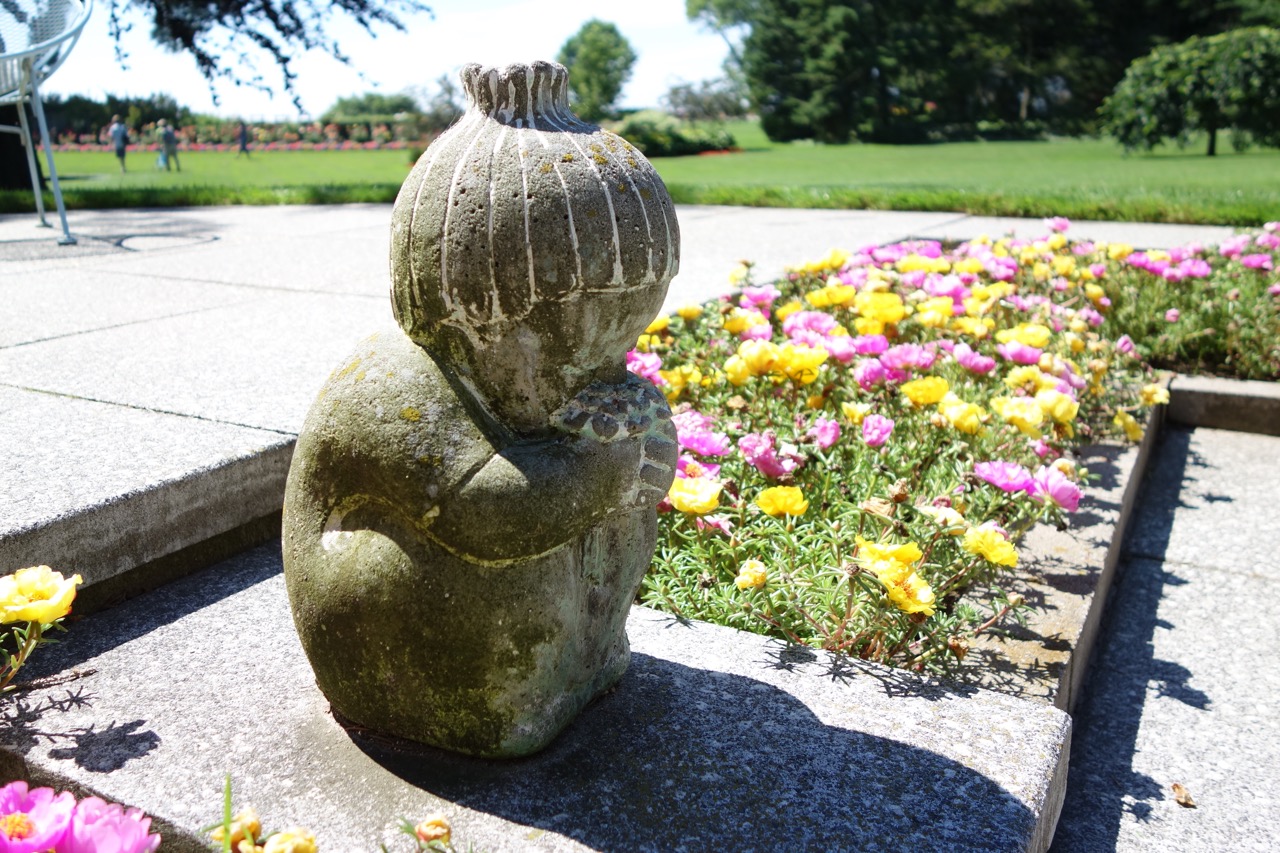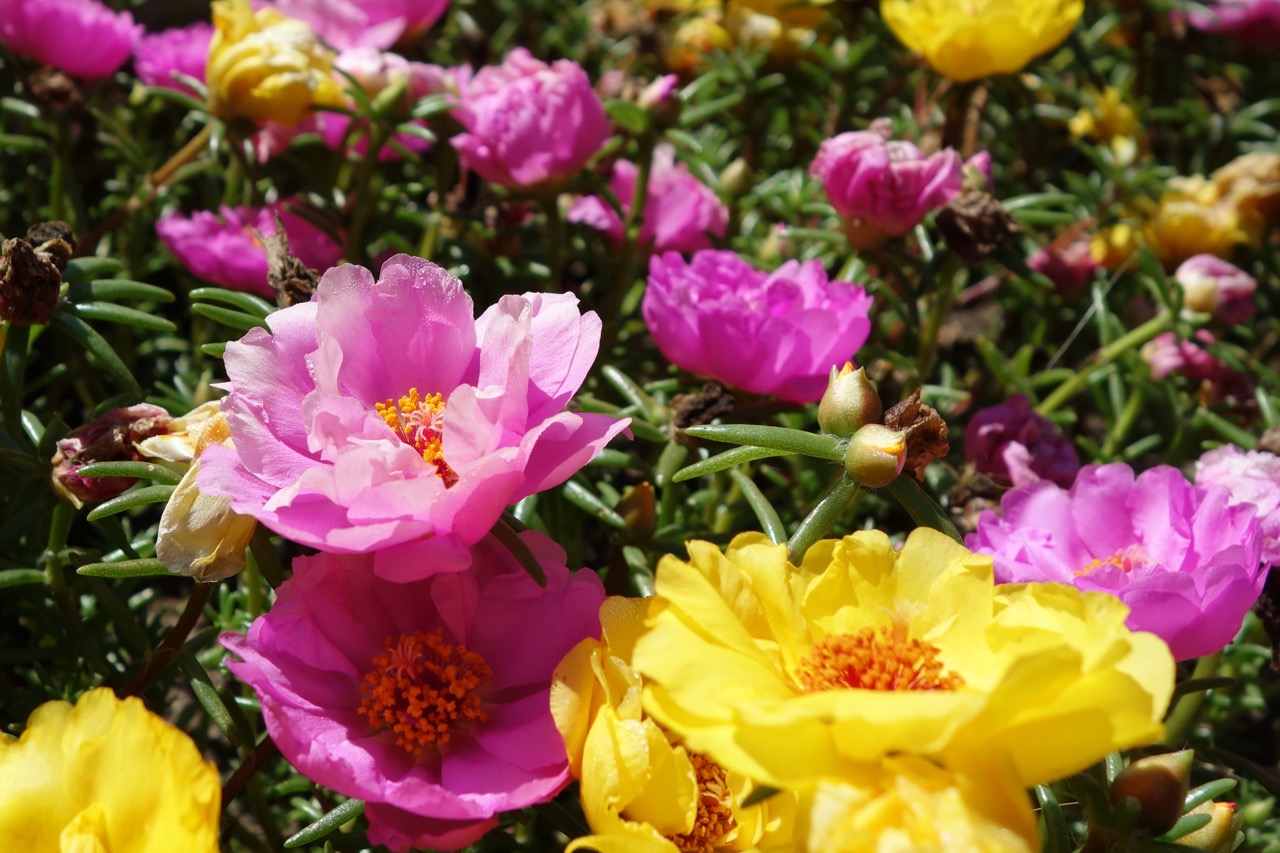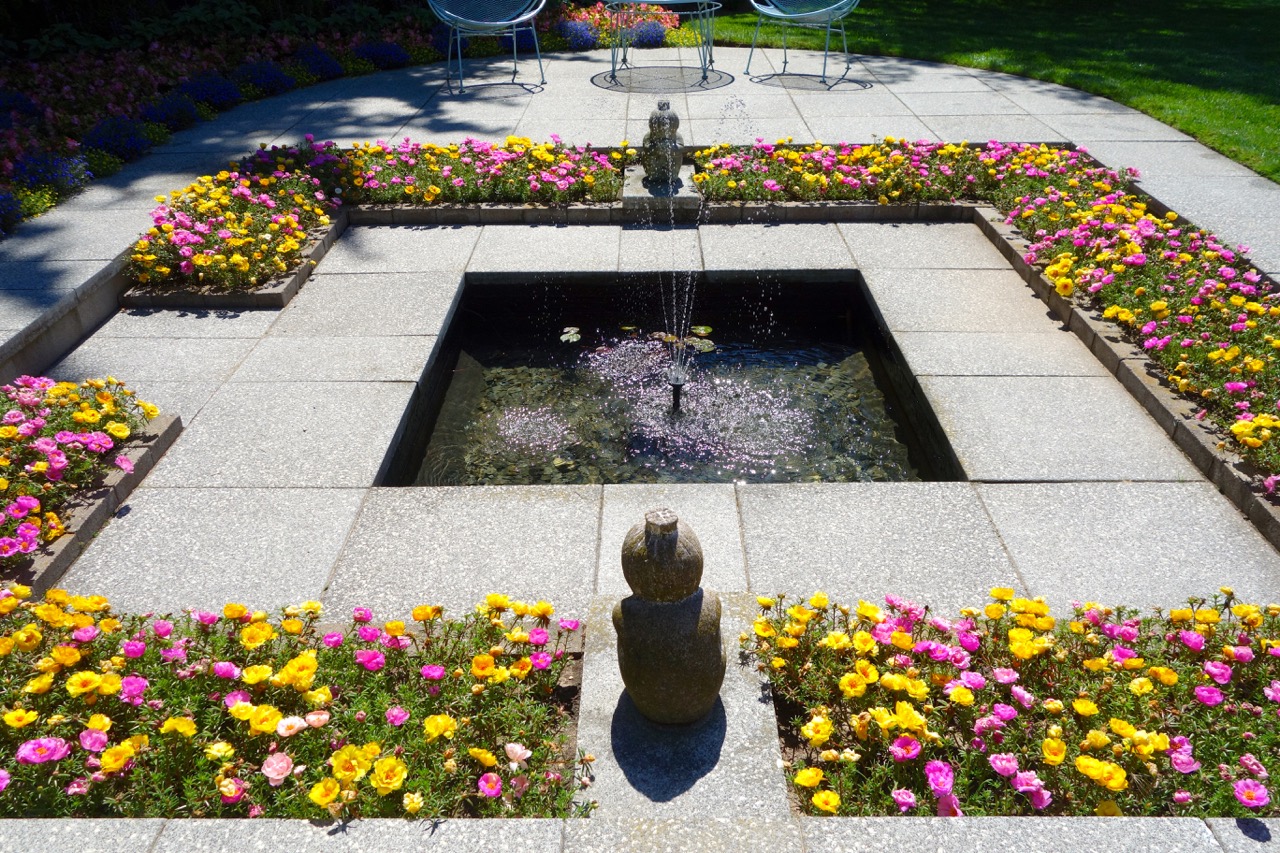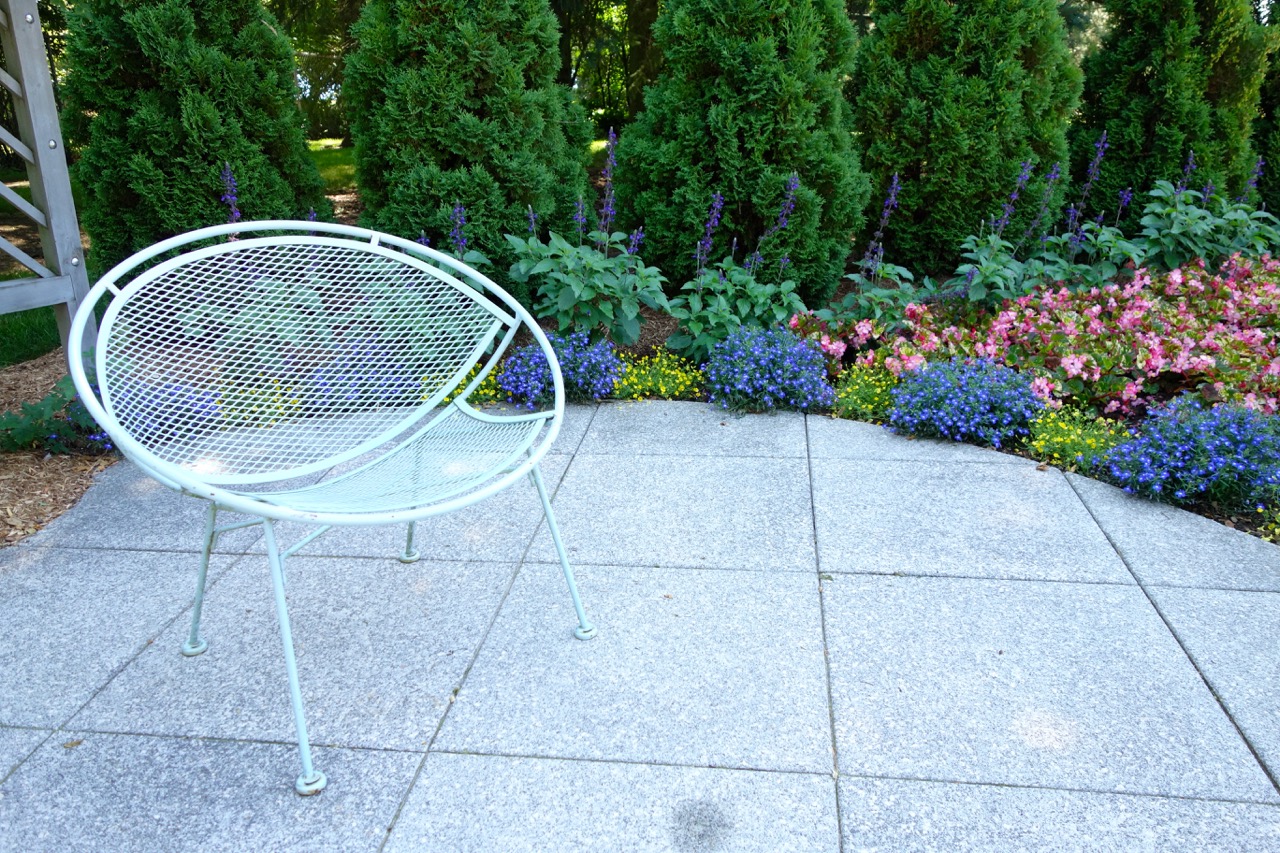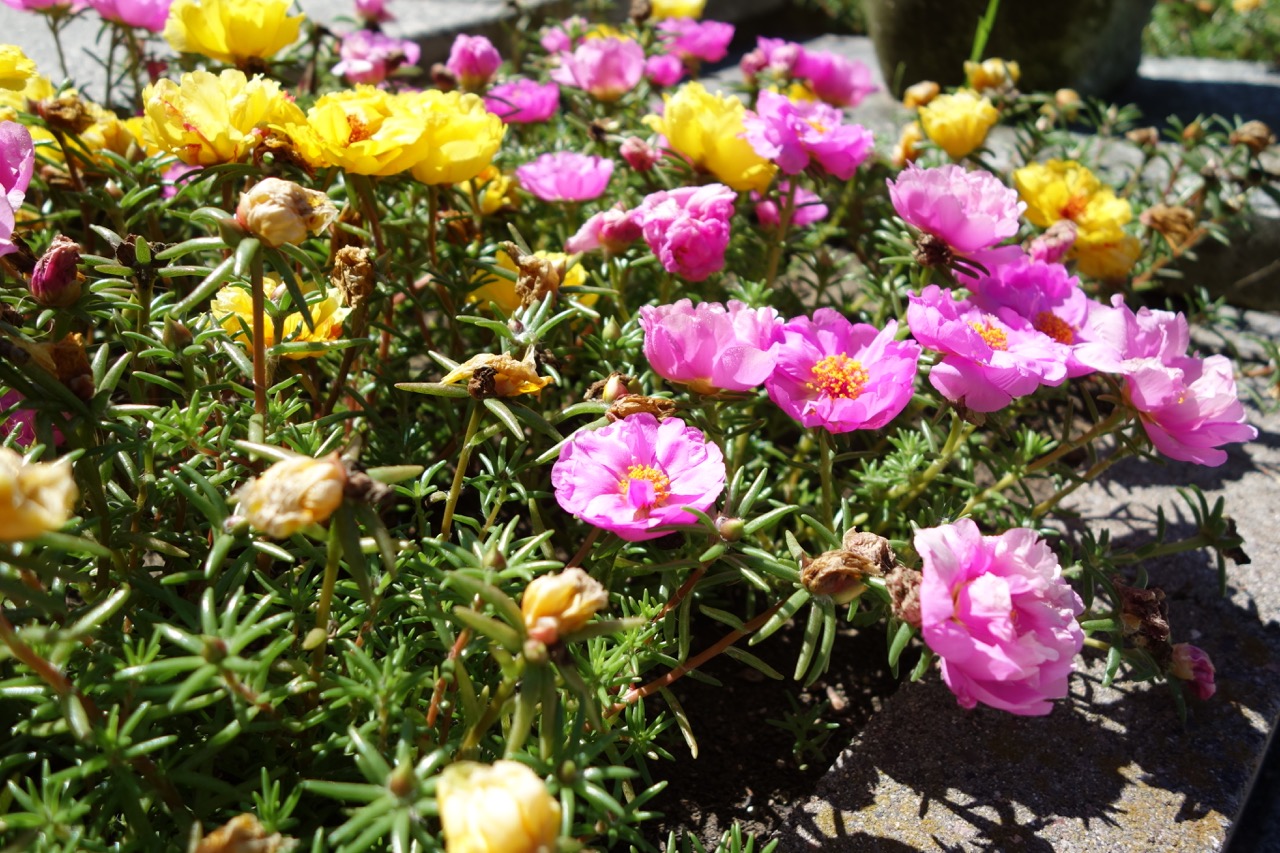In 1962 John Glenn became the first American to orbit Earth. His passing this month is a good excuse to remember the Space Age and Atomic Era and to consider this period's influence on gardening.
The Sunken Garden we see above at West of the Lake Gardens in Manitowoc, Wisconsin provides a great example of a Space Age garden: easy to care for mono-culture beds, modernist inspired furniture, and an Asian influence.
"View of the Earth as seen by the Apollo 17 crew traveling toward the Moon. This is the first time the Apollo trajectory made it possible to photograph the South polar ice cap " - Source: NASA
The 1950’s were marked by some incredible events. The first atomic bombs were detonated on civilians in 1945. The first images of earth came from captured German V-2 rockets in 1947. The first nuclear power plant opened in England in 1956. The Soviet Union launched Sputnik I, the first artificial satellite, in 1957. John Glenn orbited the earth in 1962. Apollo 17 astronauts captured the famous “Blue Marble” photo of our earth in 1972.
Popular culture both celebrated and questioned our role. The Jetsons cartoon launched in 1962 – showcased flying cars, robotic maids, and moving sidewalks. Star Trek first aired in 1966. Stanley Kubrick's film 2001: Space Odyssey premiered in 1968.
This was a time when we were grappling with technologies that had tremendous potential for good as well as for destruction. From a garden design perspective, optimism, innovation, affordability, and cross-cultural ideas dominated.
The Jetsons cartoon launched in 1962.
“The years following World War II were characterized by enormous change on every level. The war ended, leaving a new worldwide generation of veterans with young families struggling to rebuild their lives. The pressing need for inexpensive housing and furnishings spurred a boom in design and production. A new optimism—filled with the promise of the future—prevailed. In particular, a blurring of Eastern and Western aesthetics and technology represented an entirely new cultural fusion. New materials and technologies, many of which had been developed during wartime, helped to free design from tradition, allowing for increasingly abstract and sculptural aesthetics as well as lower prices for mass-produced objects.”
The Sunken Garden at West of the Lake is a great example. 1950’s Maurizio Temestini designed outdoor wrought iron chairs complete the picture and root this garden in the Space Age. Temestini’s design, called “Radar,” was inspired by the radar dish.
The Maurizio Temestini designed Radar chair. They were produced by the NY-based company Salterini until 1953. Image: 1stdibs
The rest of the garden features formal rectangular beds around a sunken pool. Flowering annuals – hot pink and yellow Portulaca, a drought tolerant succulent with tissue-like flowers – fill the beds. A pair of baby Buddhas add an Asian touch.
West of the Lake Gardens represent a life-time of gardening by Ruth St. John. Mostly gardenesque in style, with carefully planted ribbons of colorful annuals, St. John comfortably mixed styles across her 6-acre, Lake Michigan waterfront property. “In the 1970's and 1980's, a strong eastern influence became evident throughout the garden. It is this influence that still dominates the garden's appearance today,” according to West of the Lake Gardens.
See more posts about this garden here.

